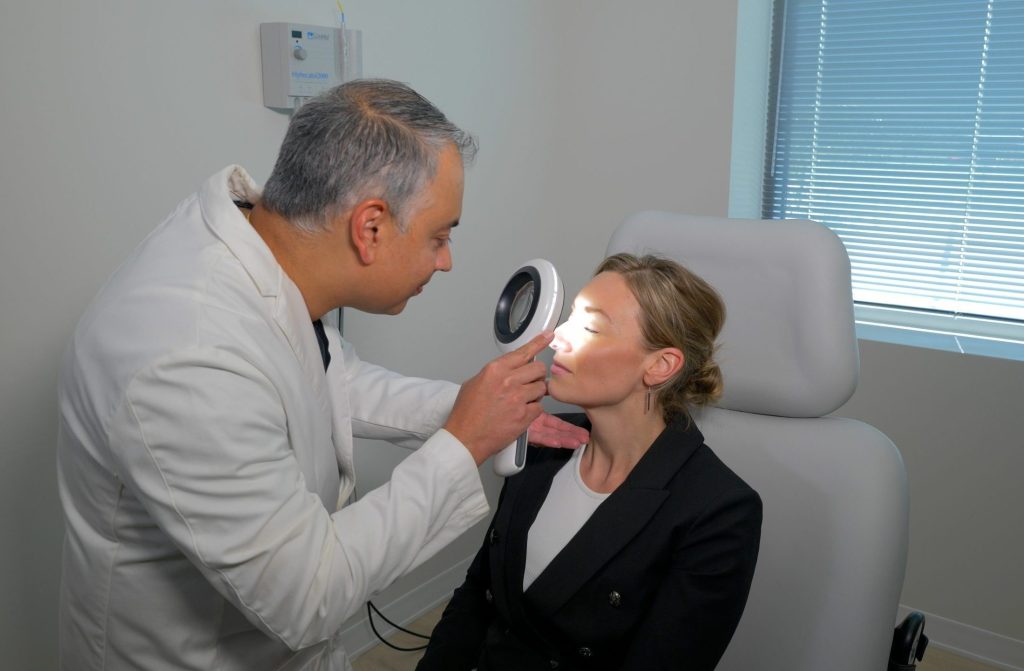Empowering the practice of exceptional dermatology
We empower leading dermatologists to practice exceptional dermatology.
Redefining excellence together
Partnering with Platinum Dermatology Partners brings your voice to shared impactful decision-making alongside industry-leading dermatologists while unlocking time to dedicate to your patients. Elevate your practice with our support, resources & physician-centric approach.
Our approach to partnership is focused on building long-term relationship based on:
- Exceptional Experiences
- Obsessive Transparency
- Continually Earned Trust
When you partner with us, you’ll have access to a wealth of expertise, resources and culture that can help optimize your practice’s operations and growth. Our experienced team is equipped to handle everything from the complex tasks to the routine daily operations.
We understand that every dermatologist and practice is unique, which is why we take the time to get to know you, your patients, and your goals, and tailor our support accordingly. By partnering with Platinum Dermatology Partners, you’ll enjoy the benefits of working with a team that shares your passion for delivering outstanding patient care and striving for excellence in all areas of your practice.
Join us today and become part of a community of industry-leading dermatologists who are working together to shape the future of dermatology.
Partnering with Platinum Dermatology Partners
We Make Decisions Together.
As a business founder and builder, you should remain involved in the important decisions of the successful practice you’ve built while enjoying the benefits that come from partnering with a forward-thinking group of your peers. Together, Platinum partners are able to design and access resources and industry-leading best practices that are often out-of-reach for smaller organizations.
- Join us in shaping the future of our speciality.
- Collaborate and Connect with the best minds in the field while adding to your practice the resources to take it to the next level.
- Boldly bring your own vision forward, and build our body of knowledge and cutting-edge solutions.
If you have an interest in learning more about the resources and culture available in our organization:

Inspiring Exceptional
Dermatology, Together
United by a collective spirit to set the standard in our specialty
Physician partners drive clinical decisions, while Platinum provides business intellect and resources.
Platinum provides partner practices with access to capital and other resources needed for growth and operational excellence.
Physician partners benefit from the collective minds of other physicians in the network plus the business intelligence of Platinum Dermatology Partners.
Why Join Platinum Dermatology Partners?
With our physician-centered model, you drive clinical care and help make important decisions while benefiting from the vast business expertise and resources available through the Platinum network.
At Platinum Dermatology Partners, we're proud to provide incredible resources including a strong support system and a culture of excellence.
We understand that each practice is unique, with its own history, values, and culture. We’re committed to preserving this individuality while empowering our partners with the resources and support they need to provide exceptional dermatological care to their patients.
Through our collaborative approach, we offer access to a wide range of resources and support, from human resources, employee benefits, marketing, payroll, recruiting, purchasing to financial and operational support and more. We believe that by working together and leveraging our collective strengths, we create a dynamic and innovative culture that supports the ongoing success and growth of exceptional dermatology.
Interested in learning more? Contact one of our physician partners to learn how you can join our community.
Human Resources
Employee Benefits
Marketing
Payroll
Recruiting
Purchasing, and more
“We wanted to continue to grow but we were all consumed with our busy practices and we needed support. Support to have the ability to open new offices, to have the backing to do what we wanted to do, to take it to the next level. That’s what we achieved and continue to achieve with Platinum Dermatology Partners”.
Mary E. Fleischli, M.D

A Family of Physicians
We are a different group practice dermatology organization. In our group practice, we make decisions with all of our physician partners. We don’t tell you what to do, we collectively decide what’s best for our company, together. You’ll join a community of leading dermatologists who share your dedication and passion to excellent care.

Shared Success
We recognize the worth of your experience and expertise and know the value of what you’ve built. Platinum Dermatology Partners will play an active role in expanding your business, providing growth opportunities, unmatched in an independent practice.

Dedication to Patient Care
As a trained physician, you shouldn’t have to spend your time on marketing, recruiting, and human resources. By handling some of the details of your business, we can help you focus on achieving the best clinical outcomes for your patients. Furthermore, the chances of your practice running out of necessary topical applications or other patient needs, is significantly reduced when working with us.
Experience the Platinum Difference
You’ll join a group of people COMMITTED
to delivering exceptional dermatology.
“What drives our success at Platinum Dermatology Partners is a palpable culture of being exceptional in all we do that creates an elevated experience for our patients, physicians, providers, and staff.”
– Michael Pennington, Co-Founder & CEO, Platinum Dermatology Partners.

